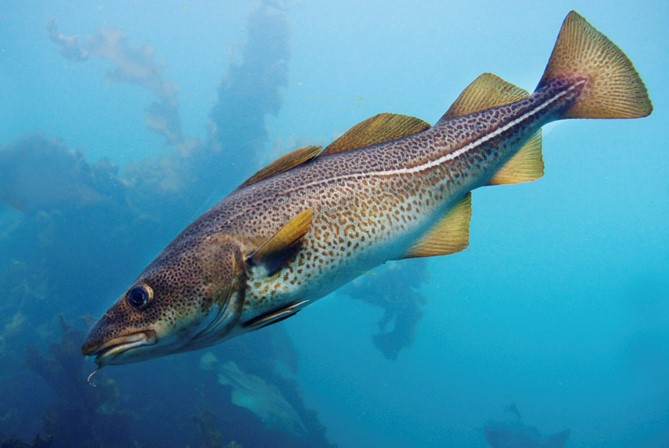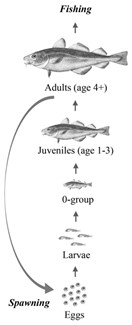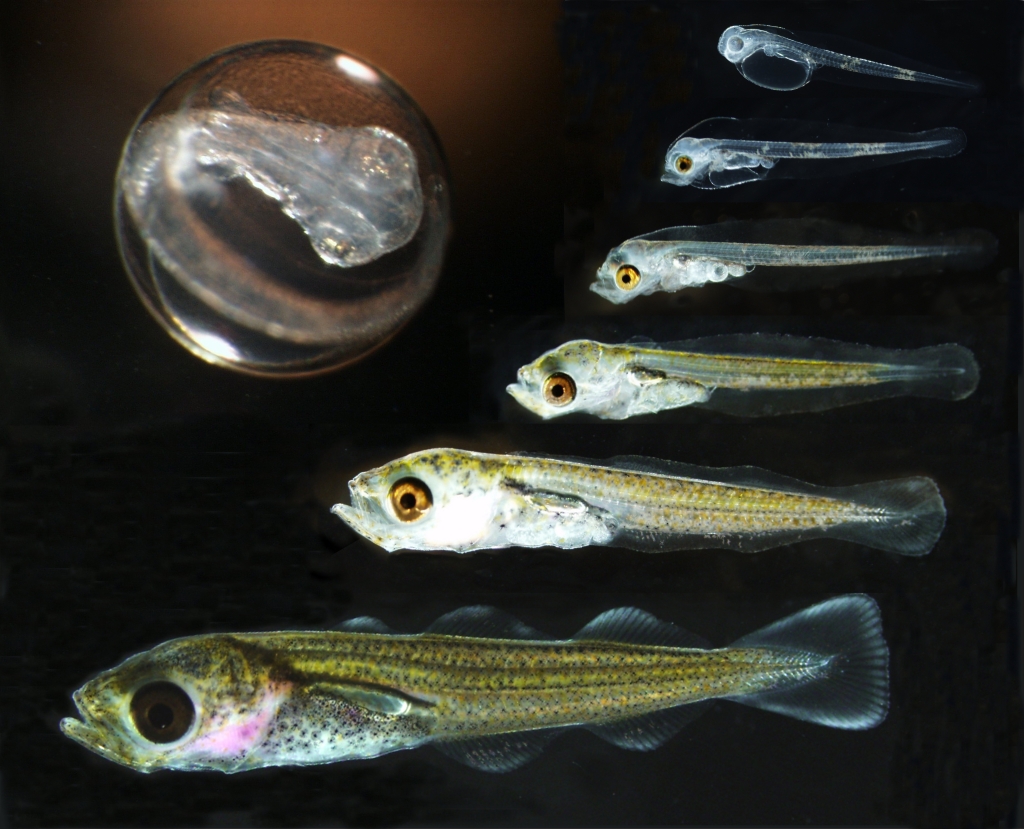|
Getting your Trinity Audio player ready...
|
Author Lucie Buttay summarises Journal of Applied Ecology’s October’s Editor’s Choice research article. Conducted with colleagues, this study used a life cycle model to simulate ‘what if’ scenarios around Northeast Arctic cod eggs and larvae.

Extreme climatic events, (e.g. heat waves and storms) are becoming more frequent and intense, and on top of that, the ever-growing development of human activities at sea, entails an increasing risk of acute events such as toxic spills (e.g., oil spill).
Those extreme events can affect a whole range of living organisms, and in our study we center our attention to perturbations that could impact the early life stage of fish. Taking the Northeast Arctic (NEA) cod as an example, we evaluated different mitigation strategies that fishery management could adopt to alleviate the effect on the population.
Why should we focus on fish and their early life stages?
Exploited fish populations, such as cod, provide food to many, and support an important economic activity. Ensuring a sustainable use of the living resources is vital for the society and may requires, to be ready for taking the appropriate measure when fish populations experience severe perturbations.
The early life stages of fish refer to the eggs and larvae. These stages represent a short time within the life of a fish, but they are also a critical period during which individuals are highly vulnerable to perturbations and mortality can be extremely high. Survival through this period has been found to play a key role in the dynamics of fish populations.
Extreme events occurring during the early life stages of fish, could lead to a mass mortality event. In a previous work, we investigated what would be the impact for the cod population of a 50 % or 99 % mass mortality event on eggs and larvae. The results showed that the population is generally resilient to such catastrophic events. The effects were moderate because of density dependence in survival in later life stages and due to the broad population age structure, which buffers the loss of a single-year class. Although population recovery is relatively fast (less than 15 years), losses in harvest and economic value can nonetheless be substantial.
Young age classes of cod are not targeted by fishing. Indeed, cod begin recruiting to the fishery at age 3. Consequently, the effect of a potential mass mortality event on eggs and larvae would only affect the fishery after approximately 3–6 years. As such, before the cohort potentially weakened by the mass mortality event recruits into the fishery, there is a window of opportunity to implement management actions to alleviate potential long-term effects on catches and population abundance.
How can we decide what to do?
The nature and timing of extreme events are often unpredictable. The effects of those extreme events on the populations are also difficult to anticipate. However, we can build upon existing knowledge on fish population dynamics and numerical models to simulate mass mortality events and test different mitigation strategies. The most actionable measure that one could think of would be to reduce fishing.
The questions we are attempting to answer here are:
- Can we alleviate the effect of a mass mortality event affecting eggs and larvae, by reducing fishing during the following years?
- How much and how long should we reduce fishing?
In the present study, we have used a life cycle model for the NEA cod population. This model is fitted to observational data (e.g., stock assessment, landing, weight at age etc.) and reproduce the historical dynamic of NEA cod from 1959 to 2012. To test the efficiency of different mitigation strategies, we simulated past mass mortality events in different single years on eggs and larvae (50 or 99% mortality) and subsequent fishing reductions of different intensity (10%, 20%, up to 100%) and duration (from 1 year up to 10 years of fishing reduction). Those are called “what-if” scenarios. To compare the different scenarios, we computed the total catch and interannual variability in catch over a period of 10 years following the mass mortality event.

So, what should we do if a mass mortality event occurs?
The results indicate that fishing reductions can be used to buffer the effects of mass mortality events. But whatever the mitigation strategy, the best is to apply it as soon as possible. A short and intense reduction in fishing (for example 100% reduction in one year) will often lead to increasing catch over a 10-year period but it is also associated with large variations in catch among years. Such variation in catch could translate to variation in income for fishermen.

Importantly, the mitigation efficiency will be higher if the stock has a higher mean age (Fig.3 and in those occasions, fishing reductions of moderate intensity applied between 1 and 4 years would allow to increase catches with only a slight increase in interannual variability.
On the other hand, a moderate fishing reduction applied shortly after the adverse event will lead to increased catches over a ten-year period without a drastic increase in the variability in annual catches. These findings demonstrate that adaptive management may be beneficial for the management of marine fish.
How could we go further?
We systematically evaluate the efficiency of a range of mitigation strategies, focusing on the population biomass, the catches and the interannual variability in catches. Managers will need to consider the tradeoff between improving catch and increasing interannual variability. But one way of going further could be to inform this tradeoff with socio-economic indicators. For example, we did not consider changes in the price of fish. We could expect that hurricanes and oil spills would have a different impact on the market, which in turn will affect how different mitigations are perceived by fishermen or managers.
In addition, we interpreted interannual variability in catch as a negative effect that arises from intense fishing reductions, but one could, through elicitation of stakeholders, identify how much variability in catch is acceptable, and under which conditions.
Read the full article “Management strategies can buffer the effect of mass mortality in early life stages of fish” in Journal of Applied Ecology



